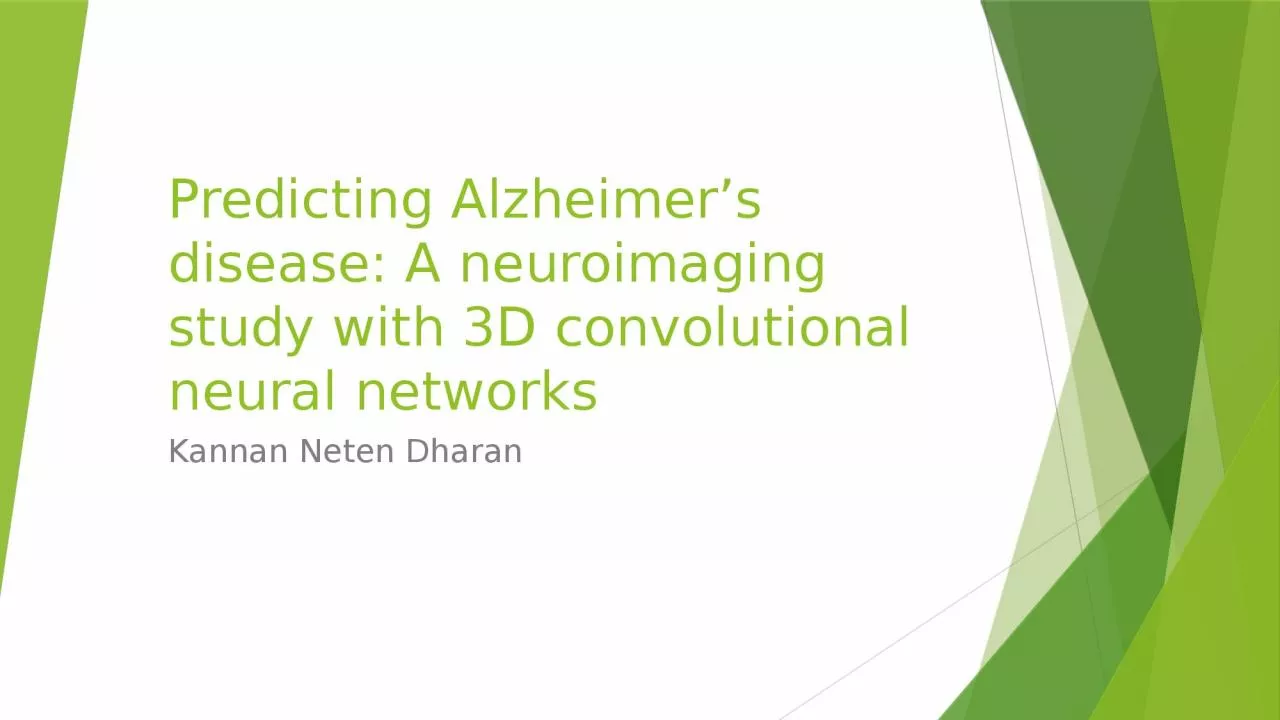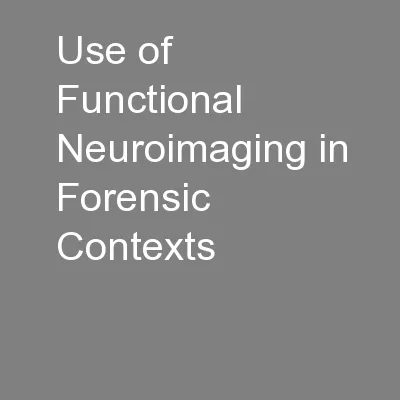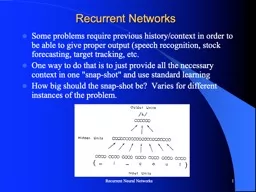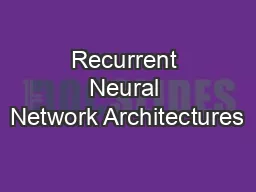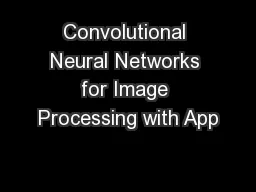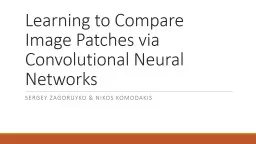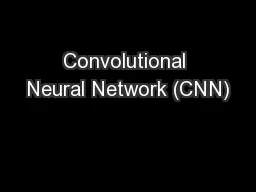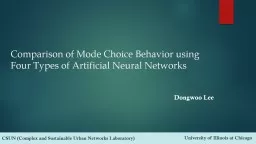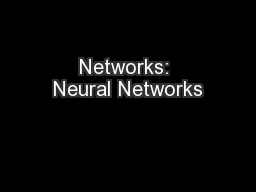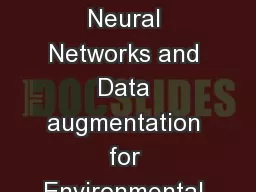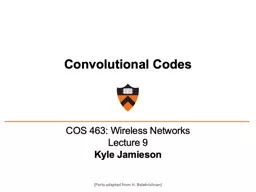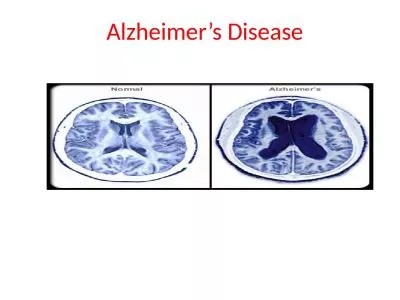PPT-Predicting Alzheimer’s disease: A neuroimaging study with 3D convolutional neural networks
Author : madison | Published Date : 2023-11-12
Kannan Neten Dharan Introduction Alzheimers Disease is a kind of dementia which is caused by damage to nerve cells in the brain and the usual side effects of it
Presentation Embed Code
Download Presentation
Download Presentation The PPT/PDF document "Predicting Alzheimer’s disease: A neur..." is the property of its rightful owner. Permission is granted to download and print the materials on this website for personal, non-commercial use only, and to display it on your personal computer provided you do not modify the materials and that you retain all copyright notices contained in the materials. By downloading content from our website, you accept the terms of this agreement.
Predicting Alzheimer’s disease: A neuroimaging study with 3D convolutional neural networks: Transcript
Download Rules Of Document
"Predicting Alzheimer’s disease: A neuroimaging study with 3D convolutional neural networks"The content belongs to its owner. You may download and print it for personal use, without modification, and keep all copyright notices. By downloading, you agree to these terms.
Related Documents

